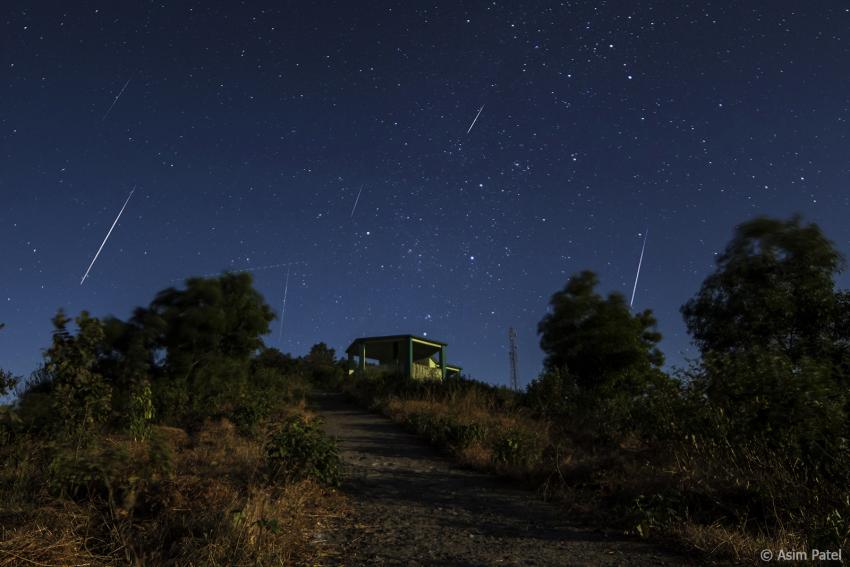Stargazers across the northern hemisphere could see as many as 70 meteors an hour this coming Sunday (13-14 December), as the Geminids meteor shower reaches its peak. Prospects for what should be this year’s best display of meteors are particularly good, as there will be no Moon in the sky to interfere with the view.
Meteors are small pieces of interplanetary debris burning up in the Earth’s atmosphere. They come in at high speeds, in the case of the Geminids typically at 130,000 kilometres an hour. Friction with the upper atmosphere quickly heats up the incoming debris, the air around them glows brightly, and the particles are rapidly destroyed. The resulting streak of light is what we see from the ground as a meteor, or ‘shooting star’.
Outside of meteor showers, there are perhaps six random meteors (sporadics) visible each hour from a given location on any night. But throughout the year the Earth’s orbit intersects material left behind by comets, or in the case of the Geminids, the asteroid Phaethon. When we encounter these thicker streams of debris there is a surge in meteor numbers – a shower.
Meteors in the upcoming shower can appear anywhere in the sky, but their trails appear to originate from a single point (known as the radiant) in the constellation of Gemini, hence the name Geminids. These meteors appear to be fairly slow moving, and can be intensely coloured.
To see the shower, observers should look upwards after 22:00 GMT, when the radiant will be high in the southeastern sky. Covid restrictions permitting, the best views are always away from city lights, but with a clear sky even urban skywatchers should see at least a few meteors.
The shower will be visible all over the UK, as long as the skies are clear. Meteor showers are easy to observe and need no special equipment, though December nights demand warm clothing, and a reclining chair and blankets make viewing more comfortable. If clouds do make viewing impossible this weekend, the showers will continue for a few days more with reduced activity.
Media contacts
Robert Massey
Royal Astronomical Society
Mob: +44 (0)7802 877699
press@ras.ac.uk
Morgan Hollis
Royal Astronomical Society
Mob: +44 (0)7802 877700
press@ras.ac.uk
Notes for editors
The Royal Astronomical Society (RAS), founded in 1820, encourages and promotes the study of astronomy, solar-system science, geophysics and closely related branches of science. The RAS organises scientific meetings, publishes international research and review journals, recognises outstanding achievements by the award of medals and prizes, maintains an extensive library, supports education through grants and outreach activities and represents UK astronomy nationally and internationally. Its more than 4,000 members (Fellows), a third based overseas, include scientific researchers in universities, observatories and laboratories as well as historians of astronomy and others.
The RAS accepts papers for its journals based on the principle of peer review, in which fellow experts on the editorial boards accept the paper as worth considering. The Society issues press releases based on a similar principle, but the organisations and scientists concerned have overall responsibility for their content.
In 2020 the RAS is 200 years old. The Society is celebrating its bicentennial anniversary with a series of events around the UK, including public lectures, exhibitions, an organ recital, a pop-up planetarium, and the culmination of the RAS 200: Sky & Earth project.
Follow the RAS on Twitter, Facebook, Instagram and YouTube
Download and subscribe to the RAS Supermassive Podcast


